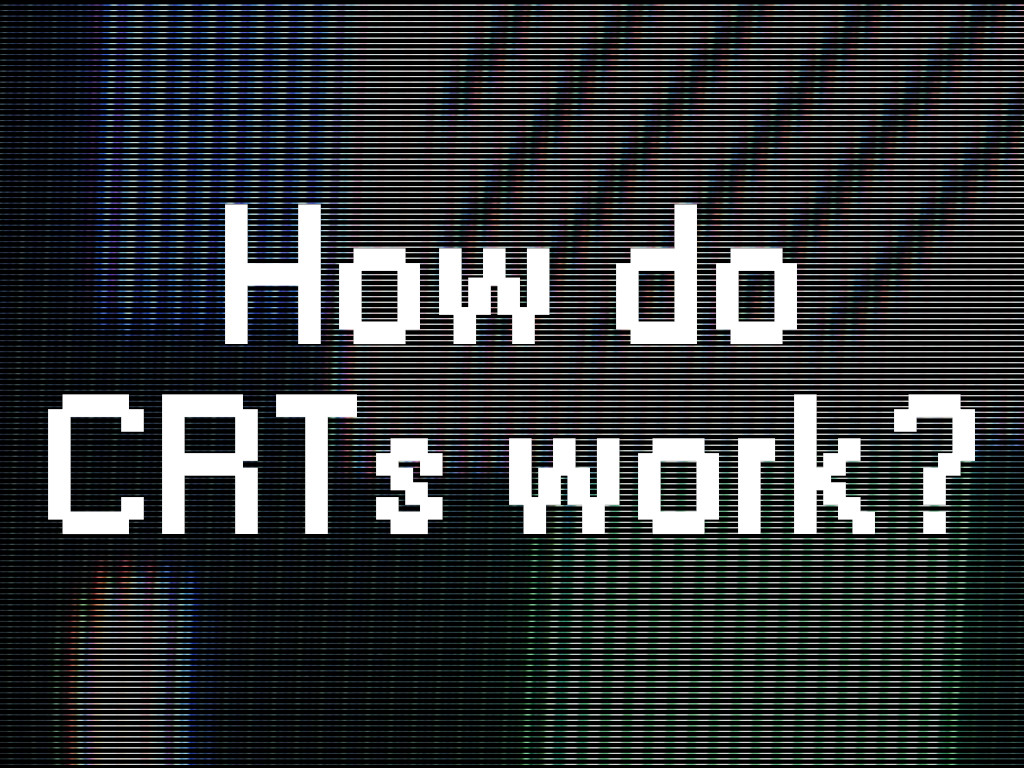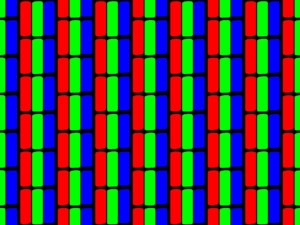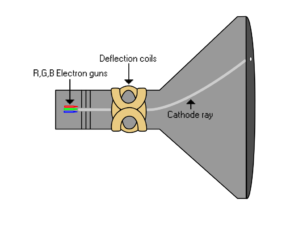
Unlike modern LCD and OLED display technology, CRTs work in a very different way
The CRT or Cathode Ray Tube is the basis of this display technology, a glass vacuum tube forms the front screen and the electron gun.
First demonstrated for video use in 1926 by Kenjiro Takayanagi, followed later by the first mass-produced colour CRT TV in 1954 by RCA.
The CRTs that we use range from 1986 to the year 2000
The electron gun is the source of these electron beams, which are emitted from the cathode and then scanned horizontally and vertically across the screen by the deflection coils, this scanning motion is what generates the image
These scan lines form the interlaced video which contains two fields of a video frame captured consecutively. these two fields create one frame. One field contains all odd-numbered lines in the image; the other contains all even-numbered lines.
With the PAL system, it scans 50 fields every second (25 odd and 25 even). The two sets of 25 fields work together to create a full frame every 1/25 of a second (or 25 frames per second), but with interlacing create a new half frame every 1/50 of a second (or 50 fields per second)



